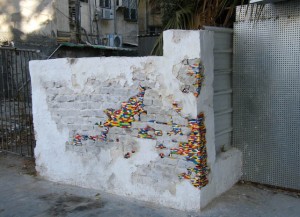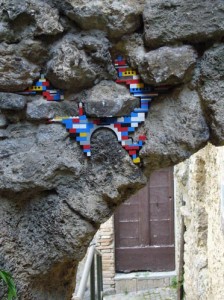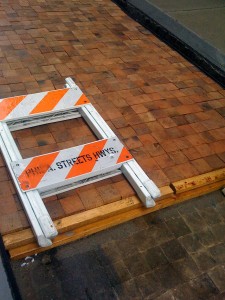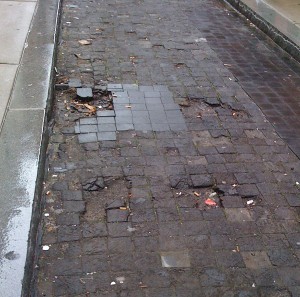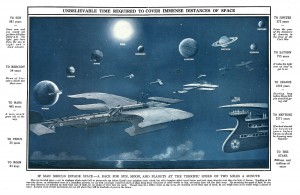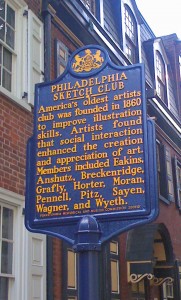 I previously mentioned the Philadelphia Sketch Club, founded in 1860 by some famous Philadelphia artists on Camac Avenue (that of the wooden cobblestones).
I previously mentioned the Philadelphia Sketch Club, founded in 1860 by some famous Philadelphia artists on Camac Avenue (that of the wooden cobblestones).
Don’t think I ever read the historical sign that is currently posted in the Avenue, though. These signs, erected by the Pennsylvania Historical and Museum Commission since 1946, are studies in idea condensation.
Way before Twitter, the designers for these signs did a pretty great job compressing history, philosophy, biography and more into signs that measure approximately 1ft x 2ft and hold less than 250 characters.
This one holds a gem of a sentence. One that deserves more publicity than it’s small alleyway allows.
Artists found that social interaction enhanced the creation and appreciation of art.
Still does. Still does. Still going strong.
